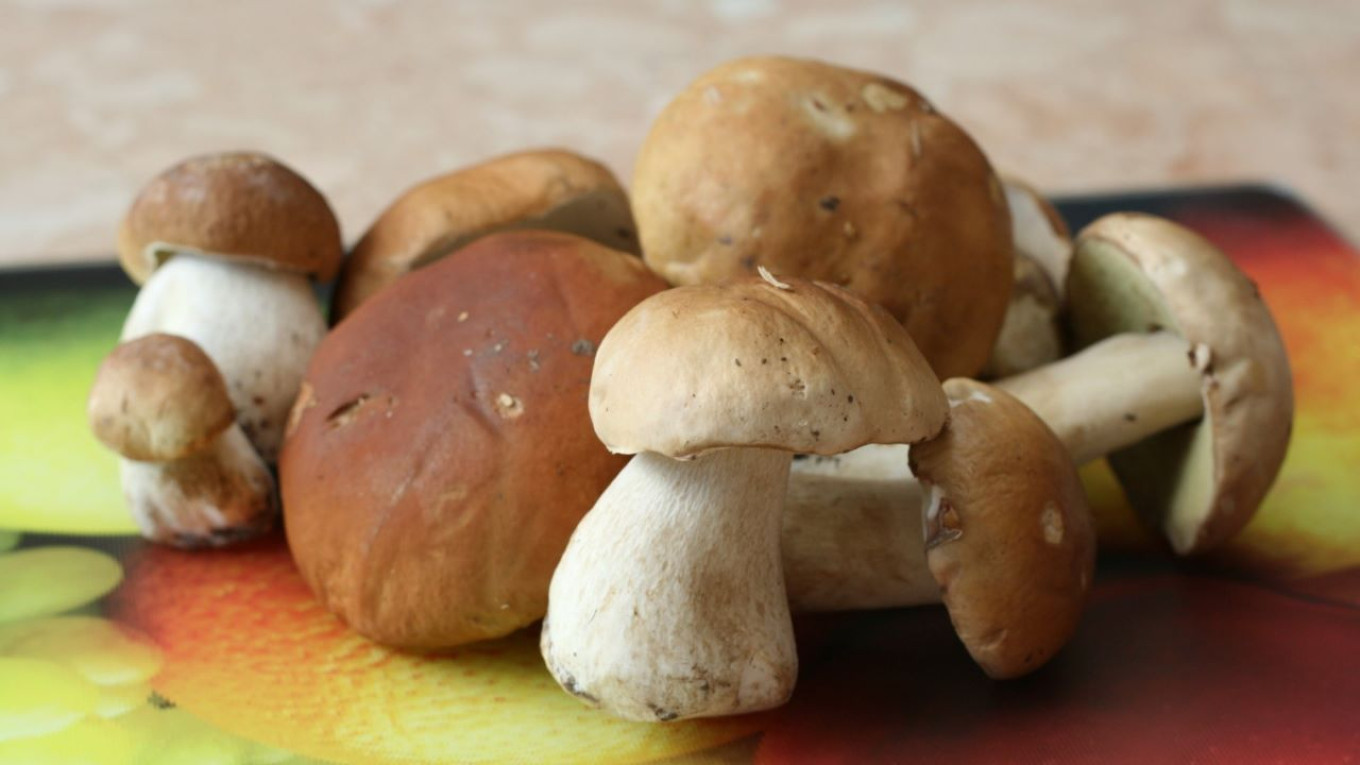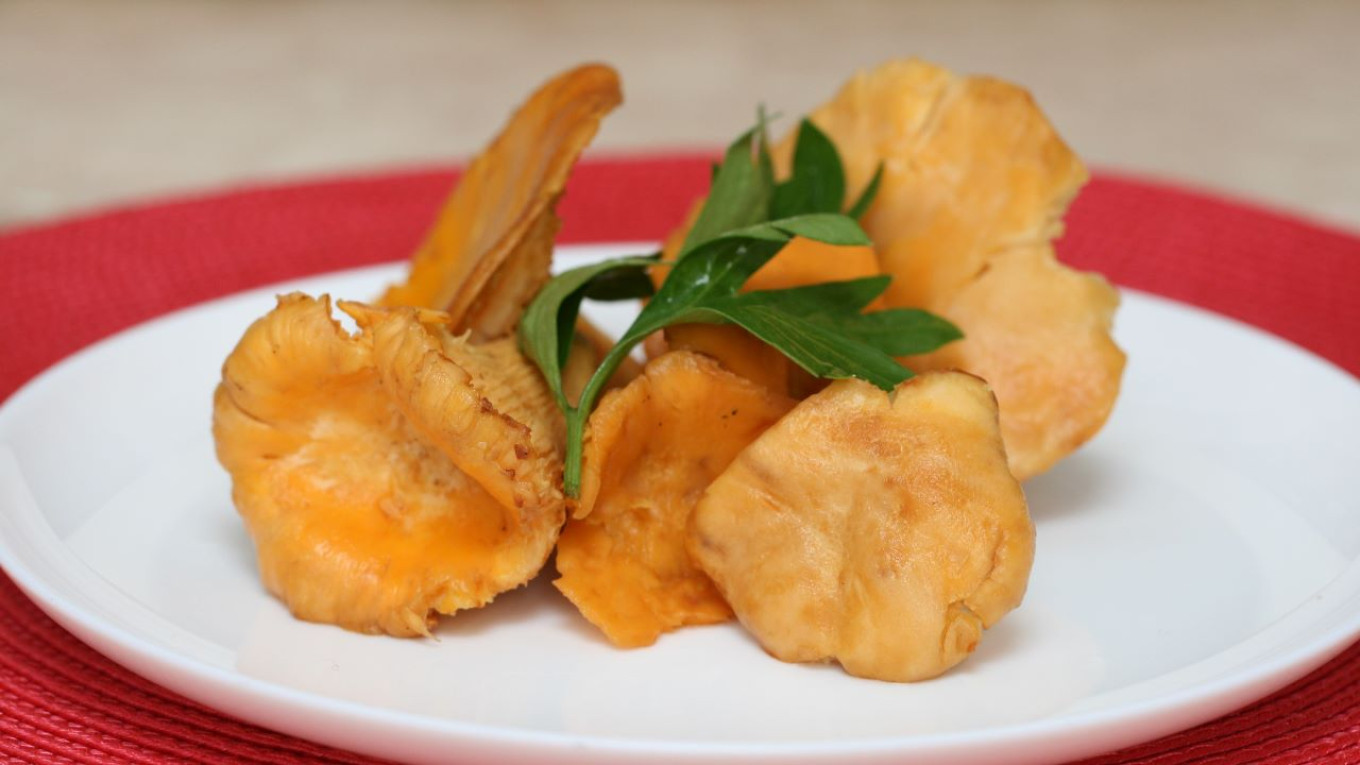Emperor Peter I loved his wife. And his wife loved mushrooms — especially fried mushrooms with sour cream. She could eat them every day, almost all day. But for some reason, the court physicians thought it was bad for her health. They even complained to the emperor. But he did not want to hurt his wife’s feelings by forbidding her to eat her favorite food.
All the same, something had to be done. As Peter the Great was pondering this dilemma, one day he complained to his jester Balakirev. Balakirev smiled and promised the Emperor that this trouble was no trouble and he would put it right without delay.
The very next day he showed up at the palace with a basket of mushrooms — porcinis, in perfect condition, utterly divine. The jester’s plan was simple. He knew that Catherine loved mushrooms as much as she hated cockroaches — yes, the common cockroaches with whiskers found in every home. She was horrified by them.
Balakirev was busy all night. He caught a few dozen large black cockroaches. He slit the mushrooms and put cockroach in each incision, then light pressed the edges closed so that they couldn’t get out. By morning the basket with the “stuffed” mushrooms was ready.

The Empress was delighted with the basket of mushrooms and immediately had them sent to the kitchen to be cooked according to her favorite recipe. Balakirev followed the cooks into the kitchen and, with permission of the Emperor, revealed the mushrooms’ secret. The cooks quickly fried them and brought them to the Empress.
Noticing that the Empress had already taken a bite, the jester snatched her plate and ran off with it shouting, “Cockroaches!” Catherine jumped up, ordered inspection of the mushrooms and saw that there were many cockroaches. Fighting down her revulsion, she broke open one of the fresh mushrooms — left by Balakirev on purpose — and a cockroach crawled out. The Empress fainted, and when she came to she was as repulsed by the mushrooms as she was by the cockroaches.
Peter was grateful to the jester and even secretly rewarded him. The collection of anecdotes about Ivan Balakirev the Jester (1699-1763), published in Russia in the 1830s, included many partly invented and sometimes true stories. He lived under seven Russian autocrats.

Russians have always loved mushrooms. “He who has drunk vodka and eaten pickled mushrooms has smiled and twinkled and in general felt especially happy,” the Russian writer Mikhail Saltykov-Shchedrin said about the habits of the gentry in the mid-19th century.
Mushrooms grow everywhere, in all countries. But have you ever wondered why only in Russia have they become a truly national dish? Of course, mushroom dishes are also eaten in Europe, America and Asia. But most people don’t eat as many varieties as they do in Russia, which is like an encyclopedia of mushrooms. We probably know about a dozen or so varieties of mushroom — porcinis, boletes, saffron milk caps, white milk caps, and Russula, to name a few. Imagine how important a role they played in the life of the people, if the Russian language has hundreds of names for them! After listing several dozen names, in his dictionary the lexicographer Vladimir Dahl notes with regret: “but scientists have not been able to properly decipher all these names, and they remain known only to the people.”
Several favorable circumstances converged in Russia to facilitate the national love of mushrooms.

On the one hand, the Central Russian plain is really a mushroom paradise. Due to climatic and natural conditions there are dozens upon dozens of edible species.
On the other hand, our climate is harsher than in Europe, and so the Russian diet is poor in fruits and vegetables, many of which need a longer growing season than the short Russian summer. Production of meat, the main source of protein, was hard to organize in the old days. There was no mass beef cattle production — where could cows have been kept? The country is almost all forest with scant steppe lands. How about hunting? Yes, of course — except hares were caught almost by hand in Russian up until the 15th and 16th centuries. Besides, hunting wasn’t easy; the aristocracy didn’t let just anyone hunt on their land. In these conditions, mushrooms were a crucial part of peasant food supply.
And finally, the third factor is religious fasting. In Orthodox Christianity the number of fast days depends on the calendar each year. But in general, there are more days of fasting than days when meat and dairy are allowed. And in these circumstances, mushrooms along with fish (which cannot be eaten on every fast day) are a real salvation. In addition, mushrooms can be dried, salted, pickled, and so on to preserve their nutrients throughout the year.
Mushroom season is fast approaching, with chanterelles among the first to appear on our tables. They can be tiny or huge, and they look at bit like gramophone horns. But their main feature is carotene. It gives them their distinctive yellowish color and, together with a substance called mannose, repels unwanted “guests.” That is, chanterelles almost never have worms.
Interestingly, chanterelles are one of the most abundant mushroom species. According to scientists, they make up to 20% of all mushrooms in the temperate zone. Since it is not customary to dry or salt chanterelles, we are left with the most delicious option: frying them. Many dishes can be quickly prepared from chanterelles. The usual mushrooms with potatoes or in sour cream can be such an elegant dish that even an Empress would be proud to serve it — especially when it is more nutritious.

Chanterelles and Chicken in Cream
Ingredients
- 500g (a bit over 1 lb) chicken breasts
- 200g (1/2 lb) small carrots
- 1 onion
- 150ml (2/3 c) 22% fat cream (light cream)
- 2 Tbsp melted butter
- Salt, pepper to taste.
Instructions
- First of all, wash the chanterelles thoroughly. The problem with chaterelles is that they most often grow on sandy soil, and there is nothing that spoils a dish more than the crunch of sand on your teeth. The best way to wash them is to take two deep bowls and put the mushrooms in one. Cover completely with water, let stand for a few minutes, lightly stir with your hands and then life them out and transfer them to the other bowl. Some of the sand will be at the bottom of the first bowl. Empty that bowl and move the mushrooms back from the second bowl. Go back and forth between the two bowls until there is not a grain of sand at the bottom of the bowl. Cut large mushrooms into halves or quarters.
- Put the chanterelles in a pan and fry on slightly above medium heat until all the liquid has evaporated.
- Turn down the heat a bit, add 1 Tbsp butter and cook for another 10-15 minutes, stirring from time to time with a spoon. Salt and pepper to taste.
- While the chanterelles are cooking, start preparing the chicken. Take a slightly larger frying pan than the one in which the mushrooms are cooking.
- Cut the onion in a medium dice, slice the carrots into rounds and the chicken into strips.
- Put the remaining butter in the second frying pan, heat and fry the onion until golden.
- Then put in the carrots and fry on medium heat for another 5 minutes, and finally put in the chicken. Cook all together for 10 minutes over medium heat. Season with salt and pepper to taste.
- Transfer the cooked chanterelles to the chicken, stir, pour in the cream and simmer for a few minutes. Season with salt and pepper if needed.
- Serve with fried potatoes, rice or bulgur.
Leave a Reply